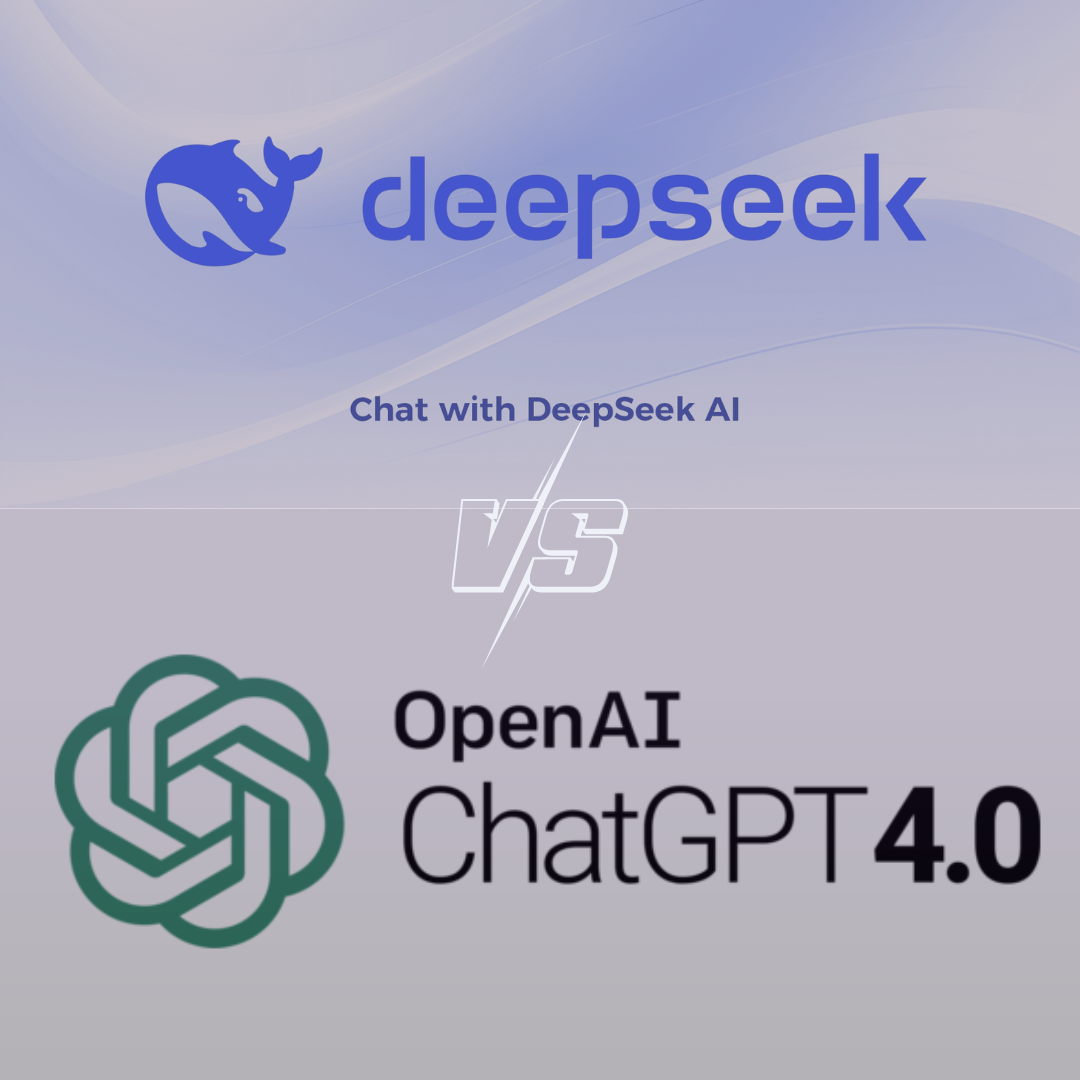Artificial intelligence (AI) continues to dominate industries worldwide, and two key players are making headlines: DeepSeek, a revolutionary Chinese AI startup, and OpenAI, a well-established leader in generative AI. Both organizations have developed large language models (LLMs) with distinct strengths, approaches, and philosophies. In this blog, we’ll explore the differences between these two giants, focusing on DeepSeek vs OpenAI in terms of coding, cost, performance, and more.
By the end of this post, you’ll understand why DeepSeek’s efficiency and affordability have made it a game-changer and how OpenAI’s versatility maintains its leadership in the AI ecosystem.
What Is DeepSeek?
DeepSeek, founded in 2023 by Liang Wenfeng, is a rising star in the AI industry. With its flagship model, DeepSeek-R1, the company focuses on:
- Cost-efficient training: DeepSeek trained its model with a budget of under $6 million, compared to OpenAI’s exponentially higher costs.
- Open-source access: The entire DeepSeek-R1 model is available for developers to download and deploy locally, ensuring greater accessibility and privacy.
- Technical expertise: Excelling in mathematical problem-solving, coding tasks, and logical reasoning.
DeepSeek has disrupted the AI landscape, particularly in industries prioritizing affordability and technical capabilities.
OpenAI: A Brief Overview
OpenAI, established in 2015, has become synonymous with cutting-edge AI. Its flagship models, including GPT-4, are widely used across industries for creative writing, customer service, and more. Key aspects of OpenAI include:
- Proprietary approach: Models like GPT-4 are not open-source, emphasizing safety, ethics, and controlled usage.
- Versatility: OpenAI’s models are general-purpose and excel in a wide variety of domains.
- Industry partnerships: OpenAI’s collaboration with Microsoft has integrated its technology into platforms like Azure.
Despite its higher costs, OpenAI remains a popular choice for organizations requiring broad applicability and cutting-edge innovation.
Key Differences Between DeepSeek and OpenAI
DeepSeek vs OpenAI Cost
One of the most significant distinctions lies in their development and operational costs:
- DeepSeek: The training of DeepSeek-R1 cost less than $6 million, achieved through an innovative Mixture-of-Experts (MoE) architecture that reduces computational demands.
- OpenAI: Training models like GPT-4 required hundreds of millions of dollars, reflecting the massive computational resources used.
For businesses or developers seeking cost-effective solutions, DeepSeek clearly outshines OpenAI.
DeepSeek vs OpenAI Performance
Performance is another critical factor when comparing these two AI giants:
- Mathematical Reasoning: DeepSeek-R1 achieves a 79.8% accuracy on the 2024 AIME benchmark, outperforming GPT-4’s 79.2%.
- General Use: OpenAI’s GPT-4 excels in diverse tasks such as creative writing, translation, and natural language understanding. It also ranks higher on benchmarks like MMLU, showcasing its broader knowledge base.
- Speed: DeepSeek boasts record-breaking inference speeds, making it an attractive choice for real-time applications.
DeepSeek vs OpenAI Coding Abilities
For developers, coding capabilities can make or break an AI model:
- DeepSeek: Specializes in Python and Java code generation, as well as solving complex mathematical equations. Developers have lauded its precision and reliability for technical tasks.
- OpenAI: While GPT-4 supports coding tasks, it’s better suited for general-purpose programming rather than specialized use cases.
If your focus is on technical problem-solving and development, DeepSeek’s coding expertise is hard to beat.
Open-Source vs Proprietary Models
A defining feature of DeepSeek is its commitment to open-source development:
- DeepSeek: By making DeepSeek-R1 freely available, the company empowers developers to modify and implement the model as they see fit. This ensures better data privacy and customization.
- OpenAI: GPT-4’s proprietary nature restricts access to its architecture. While this ensures controlled and ethical deployment, it can limit flexibility for individual users.
The open-source approach makes DeepSeek ideal for startups and researchers who value transparency and adaptability.
DeepSeek vs OpenAI: Pricing Breakdown
Another area where DeepSeek gains an edge is pricing:
- DeepSeek Pricing: Its API costs $0.55 per million input tokens, significantly lower than OpenAI’s rates. Additionally, DeepSeek offers a completely free tier without query limitations.
- OpenAI Pricing: GPT-4 API costs start at $1.25 per million input tokens, which can add up quickly for larger projects.
This affordability makes DeepSeek more accessible, particularly for smaller organizations or individual developers.
Conclusion: Which One Is Right for You?
The choice between DeepSeek and OpenAI ultimately depends on your specific needs:
- Choose DeepSeek if you value:
- Cost-effective solutions
- Superior coding and technical capabilities
- Open-source flexibility
- Choose OpenAI if you need:
- A versatile, general-purpose AI
- High-quality creative writing and language understanding
- Integration with enterprise platforms like Azure
Both DeepSeek vs OpenAI present compelling options in the AI landscape, but their approaches cater to different audiences. DeepSeek’s rise has brought much-needed competition to the field, challenging established norms and pushing innovation forward.
Frequently Asked Questions
1. What makes DeepSeek unique compared to OpenAI?
DeepSeek’s cost-efficient development, open-source approach, and specialized capabilities in coding and reasoning set it apart from OpenAI’s proprietary models.
2. How does DeepSeek’s pricing compare to OpenAI?
DeepSeek’s API costs just $0.55 per million input tokens, significantly cheaper than OpenAI’s pricing tiers.
3. Is DeepSeek better for developers?
Yes, DeepSeek excels in coding tasks and offers an open-source model, making it ideal for developers and researchers seeking cost-effective, customizable solutions.
With advancements in AI models like DeepSeek and OpenAI, 2025 promises to be a transformative year for technology enthusiasts, businesses, and researchers alike.
Related reading:
Top AI Stories of 2024 and Key AI Trends Shaping 2025
